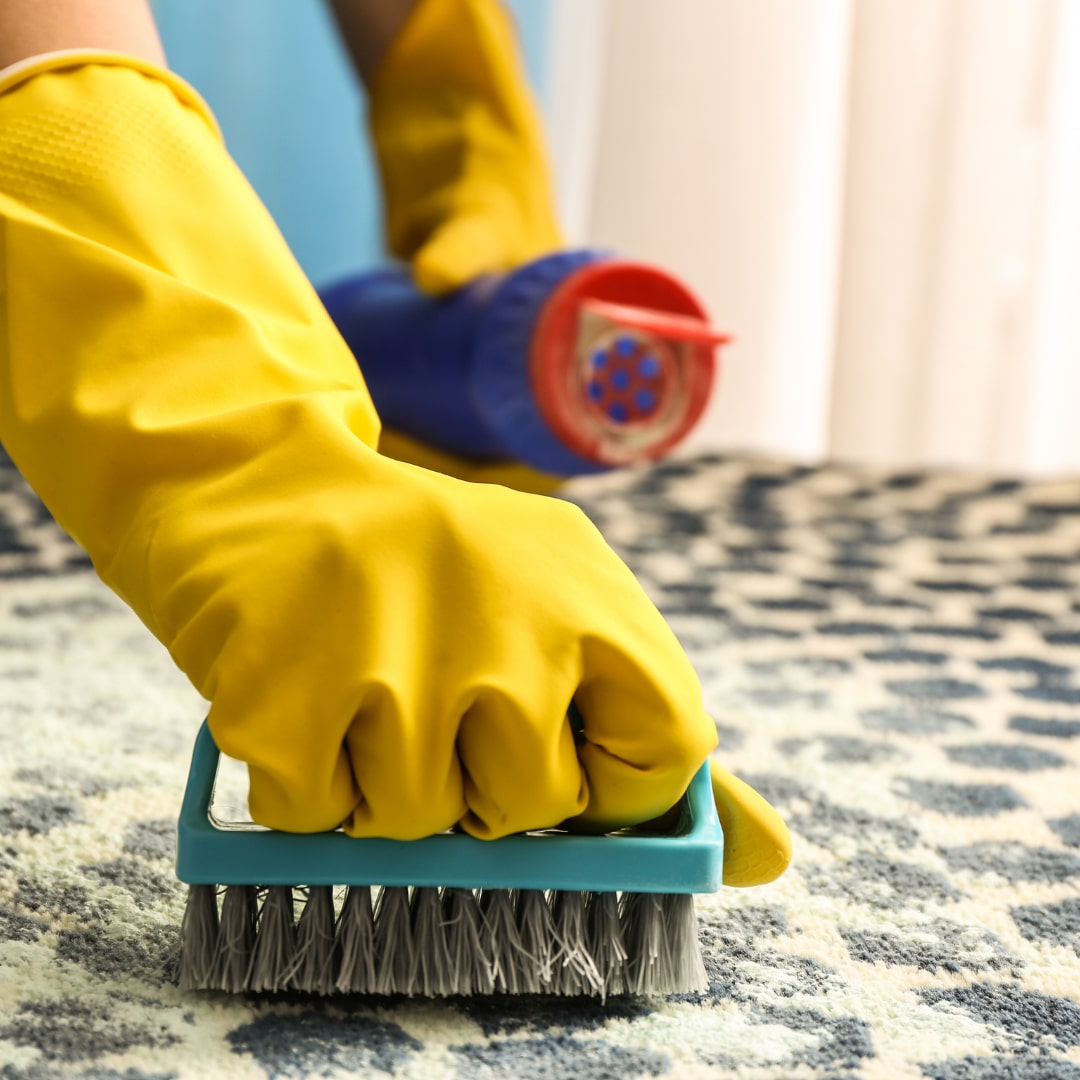
How to Get Mold Out of Carpet: Mold Remediation
How do Professionals Remove Mold from Carpet?
Mold in your house and especially in your carpets is not safe. You have to remove this growth as soon as possible or risk serious health issues. If the mold has grown on concrete or metal, you can scrub it off with cleaning solutions, but if it is growing in your carpet, it is more serious and much harder to get rid of.
Removing mold from the carpet may involve using specialized cleaning techniques. There are different chemicals and cleaning methods to use, and the following information will help you choose the right one for your needs.
Before Beginning the Removal of Mold From Carpet
Before you begin the task of removing mold from your carpets, you should know that removing this growth from absorbent, porous surfaces is difficult. Most of your resources and guides will calltol you if there is mold growth in ceiling tiles, upholstery, wood, drywall, gypsum, carpet, and other similar items, you should just remove them and dispose of them.
If your carpet is wall-to-wall, it will be hard to clean as it fills in empty crevices and spaces of porous materials. With this type of carpet, you should throw it out, including the backing if it shows growth or has a moldy smell.
If you have scatter or throw rugs that have gotten wet, these can be kept. These types of rugs can be washed. Keep them only if there is no moldy smell on them once dried. If your mold growth is a result of flooding that contained contaminated water or sewage, rugs and carpets cannot be salvaged and should be removed and disposed of.
Another option to remove mold from your carpet is to contact a local professional who has the proper equipment and chemicals. Removing mold on your own will be a time-consuming, dirty job. If you are still ready to tackle this project, read on to learn the step-by-step process to remove mold from carpeting.
Removing Mold From Carpets
The first step in removing mold from carpets is to ensure your room is well ventilated. When ventilating, however, you want to ensure the mold spores are not going to be able to spread to other parts of your home.
- Close doors or use plastic sheeting to block off unaffected areas
- Use fans to blow air out an open window
- Keep the area well ventilated especially if using cleaning chemicals
The second step is to begin removing the mold with a stiff brush. Begin scrubbing as much of the mold as you can see and the surrounding area. When the mold is scrubbed off, it should be swept into a bag and discarded. You can also a vacuum with a HEPA filter, but this increases the chances the mold spores will stay inside the vacuum and spread throughout your home the next time it is used. If you use a vacuum without a HEPA filter, there is a risk it will not properly catch all the mold spores so that you can properly dispose of them.
The third step in removing mold from your carpets is to scrub the affected area thoroughly with a cleaner. It is recommended you use a mold removal product, not bleach. Mold spores produce chemicals known as mycotoxins and you need a product that will remove these as well.
The fourth step is to allow your carpet to dry thoroughly.
The fifth step is to use your HEPA vacuum again and remove as many spores as possible.
There are some optional steps you can perform:
- Spray an anti-fungal coating in a spray form that can be found in most hardware stores.
- Use a steam cleaner. The heat from the steamer is one of the most effective means of killing mold.
- Other methods used were in a lab setting and included gamma radiation with a bleach wash. This method was found to eliminate a lot of different varieties of mold.
- A baking soda and vinegar mixture can also kill some types of mold and removes a musty odor from the carpet.
In Conclusion
You are not going to be able to get rid of all the mold and spores. Even if you use the best removal method, research has shown it will not remove 100% of the mold growth. Some forms of mold leave behind some traces even after the most thorough cleaning. Your best defense against mold growth is to keep your carpets dry.
Call Us: (727) 400-4720
Rebuild your property after damages from either water, fire, molds, or other biohazards.
- Pinellas County:
- Palm Harbor
- Dunedin
- Tarpon Springs
- New Port Richey
- Clearwater
- Port Richey
- Holiday
- Odessa
- Oldsmar
- Hudson
- Bay Pines
- Belleair Beach
- Belleair Shore
- East Lake
- Gulfport
- Indian Rocks Beach
- Indian Shores
- Kenneth City
- Largo
- Safety Harbor
- Petersburg
- St. Petersburg Beach
- Tierra Verde
- Treasure Island
- Other Tampa Bay communities
